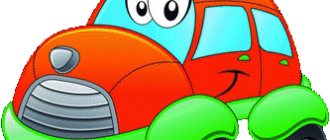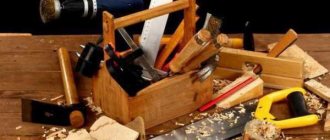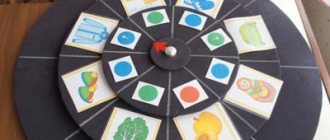Using problematic situations in environmental education of preschool children
Bibliographic description:
Ayvazyan, A. G. The use of problematic situations in the environmental education of preschool children / A. G. Ayvazyan, O. V. Marshalkina, O. E. Pankratieva. — Text: direct // Questions of preschool pedagogy. — 2021. — No. 6 (16). — P. 18-20. — URL: https://moluch.ru/th/1/archive/103/3693/ (access date: 11/21/2021).
This article is devoted to the topic of environmental education and its role in the preschool education system. In the modern world, the issue of the state of the natural world is quite relevant. The article addresses the following questions: “What are problem situations and how to use them in working with preschoolers”; “How to increase children’s cognitive activity”; “What to look for when organizing environmental activities on an eco-trail.”
Key words: preschool children, ecology, environmental education, problem situations.
The Federal State Educational Standard for Preschool Education proclaims the main goal of teachers to be the formation of an integral spiritual and moral personality. In modern realities, the concept of morality and spiritual culture of a person includes not only moral values, but also a certain level of environmental culture. The formed ecological culture of a preschooler is expressed in solid knowledge about nature, a caring and emotionally charged attitude towards it, an instilled healthy lifestyle, and the ability to understand the phenomena of the surrounding world.
The purposeful expansion of knowledge, skills and abilities of practical interaction with nature is the basis of environmental education and upbringing of children, which means the education of a humane and intellectual attitude towards nature (i.e. the formation of a system of environmental knowledge and ideas), spirituality, the development of aesthetic feelings (i.e. e. empathy for the beauty of nature). At the same time, the tasks of developing empirical and theoretical thinking and cognitive activity are solved, and the foundations of conscious interaction with the world are laid. Therefore, it is in preschool age that it is important to create conditions for children to develop an understanding that everything in nature is interconnected [1].
One of the most productive pedagogical technologies in preschool education is the technology of problem-based learning. The purpose of this technology in preschool educational institutions is to develop the ability to independently analyze a problem situation and find the correct answer. A necessary condition for the implementation of this technology is the presence of a problem situation, which implies a state of mental difficulty in children caused by the insufficiency of their previously acquired knowledge and methods of activity to solve a cognitive problem. At the heart of any problematic situation there must be a contradiction. According to the famous Soviet psychologist S. L. Rubinstein, thinking begins with the contradiction that has arisen.
There are four levels of learning problems:
‒ the teacher identifies the problem (task) and resolves it himself with active listening and discussion by the children.
- the problem is identified by the teacher, but the students themselves resolve it independently or under the guidance of an adult. The role of the teacher is to guide the student to find ways to solve the problem (partial search method).
- the child poses the problem himself, the teacher provides assistance in resolving it. At this stage, the ability to independently formulate a problem is formed.
- the student himself identifies the problem and independently looks for solutions.
The technology of problem-based learning can be used in different directions and at different moments. Regarding environmental education, it is advisable to use this approach in the following situations:
- During activities on the ecological trail. An ecological trail is a special educational route in natural conditions where there are environmentally significant natural objects. Along the route, children become acquainted with natural objects, the diversity of the living natural world and the interdependence of its objects. The educational and educational process on the ecological trail takes place in the form of relaxed communication directly in the natural environment. The use of problematic situations along the route allows you to reinforce the norms and rules of behavior in nature. For example, you can work out the following situations:
- The children picked a large bouquet of flowers for the teacher, but he was not happy, but upset. Why?
- In front of you is a berry meadow. There are a lot of berries, but you have little time. Maybe it’s worth picking the berries not one at a time, but just breaking the branches?
If there is a “pharmacy garden” along the route of the ecological trail, you can role-play a situation when a character is injured and there is no first aid kit nearby.
Also on the trail you can practice skills in participating in environmental activities and working in nature. For example, the situation with trees whose branches were broken by someone. Or a lesson on the topic “Soil” can be worked out using a problem situation like this: “Anya planted flowers, but they don’t grow at all and look bad. What could be the reason?".
- In a corner of wildlife, you can practice plant care skills with the help of problem-search situations. For example, a situation where two children took turns watering the same indoor flower and “gave it too much water.” The teacher’s task in this case is to prompt children to think about how they can save the plant (“dry it out”) and how this task can be realized.
- However, the most productive use of problem-based learning will be in experimental activities . During this activity, students not only learn to put forward hypotheses, make observations, analyze the information received and draw conclusions, but also make their own “scientific discoveries.”
The goal of experimental activities in preschool educational institutions is to form and expand students’ ideas about the world around them through practical independent knowledge. Such activities can be either basic, organized in a special subject-spatial environment (researcher’s corner, experimentation center, etc.), or accompanying, during classes, on walks, thematic leisure time or during independent activities.
To implement this activity, the teacher must fulfill a number of conditions:
‒ prepare a card index of problem-search situations of environmental content for preschoolers;
‒ provide an environment for students to independently study the properties and qualities of living and inanimate objects of the surrounding world;
- promote the organization of search and research activities, during which preschoolers independently (or together with an adult) find ways to solve problem situations that have arisen.
Children's experimentation is in many ways similar to scientific experimentation; children experience positive emotions from the feeling of the importance of the work done, obtaining visible results, and new information.
As part of experimental activities, the following types of classes can be conducted:
‒ Experimental games. A fairy-tale character is involved in the activity and asks for help in a problematic situation. For example, a Hedgehog appears in the group and complains that he just can’t arrange a hole for himself to sleep in - the pine cones are too hard, the spruce needles are prickly, etc. It’s time for him to go to bed, but he just can’t get comfortable. It is possible to create a game situation where children will act in imaginary conditions (the kingdom of the Snow Queen, visiting the Fairy of the Air, etc.)
‒ Modeling. Building models of natural objects allows us to gain knowledge about the properties of these objects, especially if these objects cannot be studied in direct contact. The reason for building and studying a model can also be a problem situation and its resolution.
‒ Conducting experiments. Conducting experiments allows us to visually explain physical phenomena in classes about the world around us. You can also lead to the experiment through a problematic situation. For example, the story of Pinocchio, who was in a hurry to go to school, but on his way he encountered a wide river, which he was afraid to cross so as not to drown. Experimentally, using containers with water and wooden toys, children establish that the tree does not sink, and accordingly, the wooden Pinocchio can safely swim across the river.
As a rule, problem situations should be well planned, with material prepared in advance, but at the same time involve a fairly flexible scenario. However, everyday situations can also be used as problematic, while updating everyday life in the group.
There are certain requirements for problematic educational situations:
- The solution to the problem situation proposed by the teacher should be aimed at nurturing independence and developing creativity in students.
- The solution to the problem should be in the child’s immediate development zone.
- When posing a problem, it is necessary to maintain a balance between the difficulty created in solving it and the degree of difficulty corresponding to the capabilities of the students in order to maintain stable motivation and the need to resolve the problem situation.
- The problem situation should be formulated as clearly and understandably as possible.
- The problem situation should be based on the basic didactic principles of teaching (scientific, systematic).
Stages of working with problematic situations in the educational process:
- setting, formulating the problem;
- updating children's knowledge;
- putting forward hypotheses and assumptions;
- selection, verification of solutions, justification of hypotheses;
- introduction of knowledge into the system.
To effectively use the problem-based method, it is necessary to separate the activities of the teacher and the activities of the student.
Activities of the teacher: creating a problem situation, formulating the problem, managing the search activities of children, summing up.
Student activities: “acceptance” of a problem situation, formulation of the problem, independent search, summing up.
Fundamental is the transition from generalized environmental knowledge to individualized [2], which implies the child’s ability to use new patterns of behavior, and also affects the development of his abilities for analysis and reflection.
In the process of solving problem-search situations, children form not only intellectual impressions, but also develop the ability to work in a team and independently, defend their own point of view, prove its correctness, determine the reasons for the failure of experimental activities, and draw basic conclusions.
In problem-based learning, the child is systematically involved in the search for solutions to new questions and situations that cause intellectual difficulty, where he develops mobility and variability of thinking, and intensifies mental activity.
Literature:
- Voroshilova V.V., Baglaeva Yu.P. Didactic game as a means of developing cognitive thinking in preschoolers in the process of environmental education [Text] / V.V. Voroshilova, Yu.P. Baglaeva // Pedagogical education. - 2009. - No. 2. - P. 13–29.
- Zolotareva O. V., Aronova E. Yu. Environmental education of preschool children in joint creative research activities with the teacher / O. V. Zolotareva, E. Yu. Aronova // Education and training of young children: materials annually. international scientific-practical Conf., 2021, Moscow / Mosaic Synthesis LLC. - M., 2021. - pp. 625–626.
- Mikheeva E. V. Ecological and subcultural practices in the environmental education of preschool children [Text] / E. V. Mikheeva // News of the Volgograd State Pedagogical University, 2009. - pp. 148–149.
Key terms
(automatically generated)
: problem situation, situation, the world around us, problem-based learning, ecological trail, preschool education, experimental activities, child, preschool age, environmental education.
Article “Use of problem-search situations in environmental education of children of senior preschool age”
The Federal State Educational Standard for Preschool Education notes the need to involve preschoolers in cognitive and research activities , which involve exploring objects in the surrounding world and experimenting with them, to develop initiative, curiosity, the ability to express their point of view and test it through observations and practical actions.
Since during the school year the educational activities of the entire teaching staff were aimed at introducing problem-based technologies and improving the quality of work on environmental education, I decided to combine these 2 areas and carry out work on environmental education for children of senior preschool age through the use of problem-search situations.
The purpose of the work experience is to form ecological ideas about the world around us in children 5-7 years old through the use of problem-search situations.
To achieve this goal, I identified the following tasks:
— create a card index of problem-search situations of environmental content for preschoolers;
- promote the organization of search and research activities, during which preschoolers independently (or together with an adult) find ways to solve problem situations that have arisen;
— create conditions for children to independently study the properties and qualities of living and inanimate objects of the surrounding world.
A problem-search situation is a situation in which a child wants to solve problems that are difficult for him, but he does not have enough data, and he must look for it himself.
A problematic situation arises when a teacher deliberately confronts children’s life ideas (or the level they have achieved) with scientific facts, which they cannot explain - they lack knowledge and life experience.
The main link in the problem situation is a contradiction. It is important for the teacher not to miss this moment and to help children see the inconsistency, the contradiction that one or more children noticed during the lesson, and include them in active search activities.
Stages of organizing search and research activities
Stage 1 The teacher poses a problem and begins to solve it, the children independently solve the problem.
Stage 2 The teacher poses a problem, the children independently find its solution and carry out an experiment.
Stage 3 Statement of the problem, search for a method and development of the solution itself are carried out independently.
The problems posed to children should be such that preschoolers cannot complete them based on existing knowledge, but can independently (or, if necessary, with the help of an adult) analyze the situation and find the unknown (gain knowledge).
One of the most interesting and exciting ways to find ways to solve problem situations is the experimental activity of preschoolers, during which children not only learn to put forward their own hypotheses, observe, reflect, compare, draw conclusions, establish a cause-and-effect relationship, but also make their own "discoveries".
I will dwell on the experiment on the solubility of salt in a glass of water, conducted in my open lesson (description of the experiment). The children experimented, put forward their hypotheses, observed the experience, reflected, made conclusions and established cause-and-effect relationships (the salt did not disappear, but dissolved, the children learned by tasting it).
When creating and solving problem-search situations, I used the following techniques:
- bringing children to a contradiction and inviting them to find a way to solve it themselves (I ask the audience for an example. Answer: Certain objects do not sink in water, for example, wooden objects, and an egg did not drown, although it should have drowned). - So much for the contradiction.
- presentation of different points of view on the same subject (phenomenon); I ask questions from the audience: “Ecological situations”
One day, a wizard decided to turn a dense, dark spruce forest into a birch grove. What do you think this led to?
The wizard decided to drain all the swamps? What did this lead to?
The wizard decided to rid the forest of foxes. What did this lead to?
The wizard decided to make sure that the weather was always sunny and warm. Where it leads?
- encouraging children to make comparisons, generalizations, conclusions from the situation, comparison of facts; (immersion of the egg in water depends on its concentration)
- heuristic (leading, “key”) questions; (why did the egg sink deeper in one glass, why can towers made of the same number of cubes be of different heights)
For children to independently study the properties and qualities of living and inanimate objects of the surrounding world, the group was created a corner of experimental activities, equipped with a variety of materials and equipment.
Work on environmental education was carried out in different types of joint educational activities:
- on walks
Experience: “Water expands when it freezes” Purpose . Find out how snow retains heat. Protective properties of snow. Prove that water expands when it freezes. Move. Take two bottles (cans) of water of the same temperature out for a walk. Bury one in the snow, leave the other on the surface. What happened to the water? Why didn't the water freeze in the snow? Conclusion. Water does not freeze in snow because snow retains heat and has turned into ice on the surface. If a jar or bottle in which water has turned into ice bursts, then we can conclude that water expands when it freezes.
in leisure activities.
How to puncture a balloon without harming it?
The child knows that if you puncture the balloon, it will burst. Place a piece of tape on both sides of the ball. And now you can easily push the ball through the tape without any harm to it.
during work and observations in a corner of nature (examples: the speed of blossoming of branches from different trees)
visiting interactive excursions in the museum.
"Fishes of the Komi Republic"
"Rivers of the Komi Republic"
"Journey with the Yola Moose"
“Secrets of the Invisible Man” - about air
Thus, in the process of solving problem-search situations, children form not only intellectual impressions, but also develop the ability to work in a team and independently, defend their own point of view, prove its correctness, determine the reasons for the failure of experimental activities, and draw basic conclusions.
It is known that not a single educational problem can be successfully solved without fruitful cooperation and interaction with the family and complete mutual understanding between parents and teacher. In individual conversations, consultations, and at parent meetings through various types of visual propaganda, we convince parents of the need for daily attention to children’s joys and sorrows, encouraging the child’s desire to learn new things, independently find out what is incomprehensible, and understand the essence of objects and phenomena. To increase parental competence, a parent meeting “We are future researchers” was held; Recommendations have been compiled: “ How to help a little researcher”, a card index of elementary experiences and experiments that can be carried out at home. Parents were involved in conducting experiments in kindergarten.
Of course, environmental education for children is a rather lengthy and complex process, but it can become very exciting and interesting for both the teacher and the student. All that is needed is interest on both sides, which can be created using problem-search situations. But today we can say that the regular use of problem-search situations of environmental content and solving them by children gives positive results.





